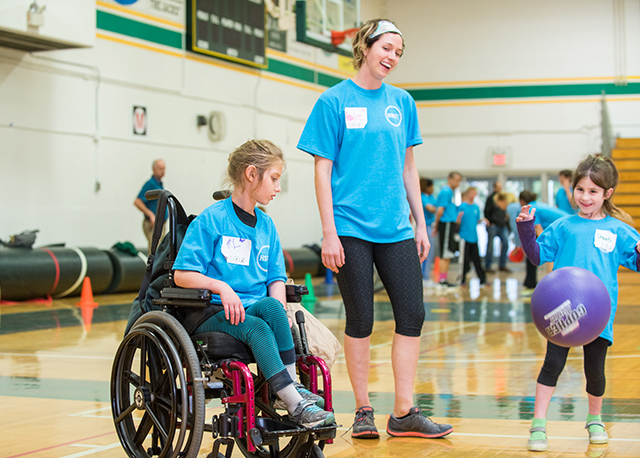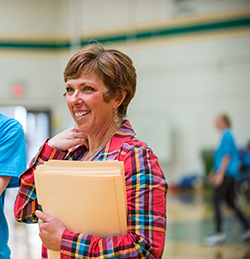
Conceived by Recreation Administration professor Jayne McGuire, HSU Fit is a program for children ages 6 to 18 that addresses the lack of physical activity and associated health risks among children with disabilities. Paired with peer partners–undergraduate students enrolled in McGuire’s REC 480 Practica course–each child follows a routine that addresses individual fitness and cognitive goals over a six-week period.

“There seems to be a lack of opportunities for kids who have disabilities to engage in recreation and fitness activities,” says McGuire. “As soon as parents heard about HSU Fit, they wanted to sign their children up.”
Enrolled in the program’s first semester are 13 children with disabilities and 13 of their non-disabled siblings or friends. Together, they represent one component of the four-layered system designed to benefit campus and community.
“When families have a child with disabilities, their siblings are often recreating in a different program,” McGuire says. “It’s a nice opportunity for children with and without disabilities to participate together.”
HSU Fit’s second layer focuses on those parents, who are often in need of respite from the responsibilities linked to raising children who have special needs. During the Friday night activity slot, they have the option of participating in an adult wellness program that offers yoga, relaxation and other healthy pursuits. If they prefer, parents can also use the time to shop, catch a movie, or go out to dinner.
Assembling and overseeing the first two elements are teaching credential candidates working on their adapted physical education added authorization. They plan what is happening in the gym, what goes on in the dance room, and how pool activities are structured. They’re also responsible for training and orientation of the peer partners.
While the parents take a break, those peer partners take over, guiding children through their selected activities and monitoring week-to-week and overall progress. Students enrolled this spring come from a variety of majors, McGuire says, including Child Development, Psychology, Dance, Kinesiology, and Recreation Administration.
“The greatest challenge of participating in this program is taking a step back to understand the wide variety of abilities these children have,” says Maddi Null, who graduated this spring with a B.A. in Recreation Administration. “It was very rewarding to watch my peer partner, Madison, become so much more confident in her swimming abilities. The smile that lit up her face the first time she swam across the pool without a life jacket was pure joy.”